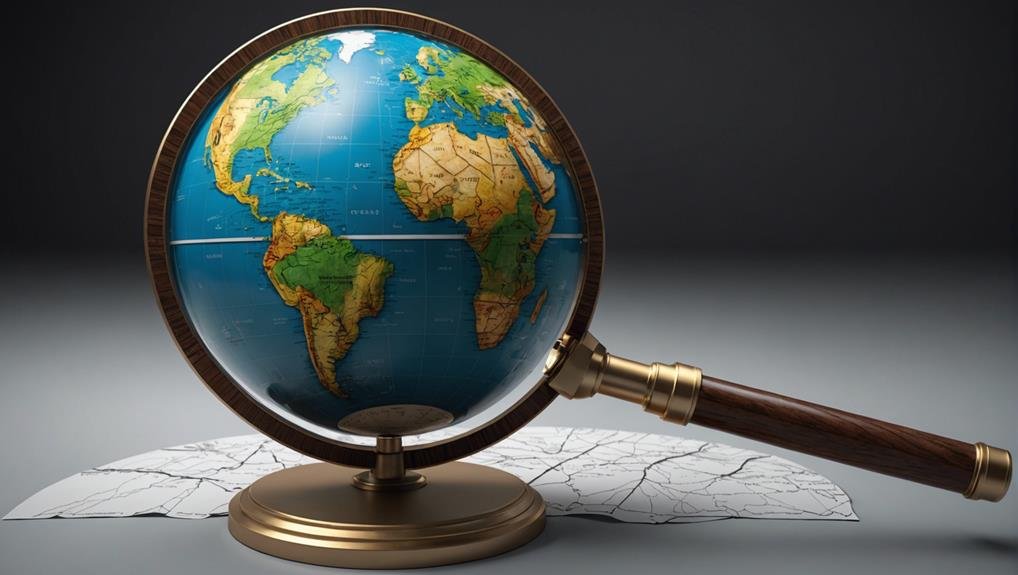Decoding First World Countries: Traits and Evolution
The characteristics of first world countries are deeply ingrained in historical alliances and Cold War dynamics, shaping their high living standards and economic stability. Despite this, criticisms arise from wealth inequality and outdated terminology, revealing social realities. The development of these nations calls for a more inclusive and diverse understanding, reflecting changing global relations towards an egalitarian approach. Contrasting them with second and third world nations highlights stark economic disparities impacting societal development. Understanding the intricate evolution of first world countries exposes multifaceted layers contributing to their global reputation and position. This analysis provides insights into their past, present, and future significance.
Key Takeaways
- First world countries exhibit high living standards and economic stability, reflecting robust governance and rule of law.
- The classification of first world countries has evolved to encompass diversity and social factors, moving towards a more inclusive approach.
- Criticisms include wealth inequality and resource concentration among a small segment, obscuring socio-economic realities.
- First world countries contrast with second and third world nations in terms of economic prosperity, stable currencies, and advanced infrastructure.
- The terminology of first world countries faces challenges due to nuanced development levels and disparities, necessitating a more nuanced understanding.
Historical Origins and Cold War Context
The historical origins and Cold War context of first world countries can be traced back to the strategic alliances formed between the United States and its Western allies against the Soviet Union and its Communist Bloc counterparts. During the Cold War era, these alliances played a pivotal role in shaping the global power dynamics, with countries aligning based on ideological differences and strategic interests.
The term 'first world' emerged to describe developed nations in alignment with the U.S. and its allies, contrasting with the 'second world' under Soviet influence and the 'third world' comprising economically underdeveloped nations. This division underscored the political, economic, and social disparities between countries, highlighting the impact of Cold War alliances and Soviet influence on the evolution of first world characteristics.
Common Traits and Characteristics
In examining the common traits and characteristics of first world countries, it becomes evident that their development is intricately linked to historical alliances and economic ideologies. These nations exhibit a set of defining features that contribute to their status and reputation on the global stage:
- High Living Standards: First world countries are known for providing their citizens with access to quality healthcare, education, infrastructure, and overall well-being.
- Economic Stability: These nations boast strong and stable economies, characterized by low inflation rates, high employment levels, and robust financial systems.
- Rule of Law and Governance: First world countries typically adhere to democratic principles, ensuring the protection of individual rights, fair legal systems, and accountable governance structures.
These traits collectively shape the identity and perception of first world countries, reflecting their commitment to progress and prosperity.
Evolution and Modern Interpretations
Revealing the dynamic shifts in perception and classification, the evolution of first world countries necessitates a nuanced examination of their modern interpretations.
Modern perspectives on first world nations emphasize their global impact, showcasing a departure from Cold War-era definitions towards a more inclusive and diverse understanding.
Today, the classification of first world countries extends beyond mere economic indicators to include social factors such as equality, sustainability, and cultural richness.
While historical alliances shaped the initial concept, contemporary interpretations highlight the need for continuous adaptation to reflect the changing landscape of global relations.
The term 'first world' may be losing favor due to its connotations of hierarchy, pushing for a more egalitarian approach in defining nations based on their advancements and contributions to the world stage.
Criticisms and Challenges Faced
While wealth inequality remains a prevalent issue in many first world countries, the designation as a developed nation does not always guarantee equitable access to local resources.
- Wealth distribution disparities persist, with a concentration of resources among a small segment of the population.
- Outdated terminology like 'first world' can obscure the complex socio-economic realities within these nations.
- Challenges arise when outdated labels fail to capture the nuanced development levels and disparities present in modern societies.
Comparisons With Other World Categories
Amidst the evolving landscape of global categorizations, contrasting first world countries with their second and third world counterparts reveals stark disparities in economic development and ideological foundations.
First world nations typically exhibit high levels of economic prosperity, characterized by stable currencies, robust financial markets, and advanced infrastructure. In contrast, second world countries, historically under Soviet influence, and third world nations, economically underdeveloped, face challenges such as poverty and inadequate infrastructure.
Developed economies often embrace capitalism, emphasizing private ownership and free markets, while alternative economic ideologies like socialism and communism prevail in other categorizations. The global impact of these distinctions is evident in wealth distribution, access to resources, and overall standards of living, highlighting the complex interplay between economic disparities and societal development.
Conclusion
To sum up, the categorization of First World countries has evolved greatly since its Cold War origins, with discussions surrounding its relevance in today's global landscape.
One noteworthy statistic to mention is that as of 2021, the Human Development Index ranks Norway as the top First World country, underscoring the ongoing importance of development indicators in evaluating a nation's status.
The characteristics and challenges faced by these nations continue to shape their position in the world, warranting further examination and scrutiny.







